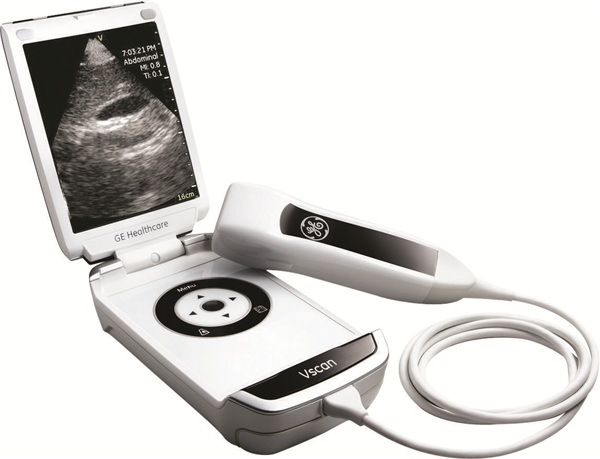Innovations from emerging nations disrupting the world order
By A. Asohan February 6, 2013
- Different sets of eyes means different perspectives on problems and possible solutions to address them
- Vscan handheld ultrasound scanner came out of India-specific issues, now used in multitude of ways
 IT IS perhaps unique to today’s globalized world that emerging nations working on their own problems may create and an innovative technology or service that can become a game-changer in more advanced nations.
IT IS perhaps unique to today’s globalized world that emerging nations working on their own problems may create and an innovative technology or service that can become a game-changer in more advanced nations.
Dr Viswanath Poosala, executive director and president of Bell Labs India, in a media briefing last year, described this process of reverse innovation as how a technology developed for an emerging market, when transported to a developed market, may have a disruptive impact there.
It is a lesson that Bell Labs’ fellow US industry and R&D powerhouse General Electric (GE) has also learned. “There are a lot of very smart people out there, and not all of them live in the United States,” GE Asean chief executive officer Stuart Dean (pic) said on Feb 4 when briefing the Malaysian media on the country-specific findings of the GE Global Innovation Barometer.
“Fifteen years ago, all our R&D (research and development) came out of upper-state New York,” he said, referring to the company’s Niskayuna facility.
Then the company started looking elsewhere. Part of the drive came from the ninth chairman and chief executive officer of GE, Jeffrey R. Immelt. “When our new chaiman and CEO Jeff Immelt came into the role in 2001, he felt that we had been under-investing in research and the risk-taking that goes along with it,” said Dean.
“We brought in a lot of innovative people to drive innovation, and we hired more marketing people so that we could understand what our customers and the industries they were in were facing,” he added.
GE says its Global Research arm is one of the world's largest and most diversified industrial research organizations, providing innovative technology for all of GE's business. It is now focused on developing innovations in areas such as molecular imaging and diagnostics, energy conversion, nanotechnology, advanced propulsion and security technologies.
GE Global Research is headquartered in Niskayuna, and now has facilities in Bangalore, India; Shanghai, China; and Munich, Germany. It has more than 2,800 employees worldwide, with more than 1,000 of them holding PhDs. In 2008, it filed 2,537 patents in the United States.
In 2008, GE spent a total of US$4.3 billion on R&D. The company meanwhile reported annual revenues of US$147 billion in 2012.
“Collaboration is pretty key to better and more innovation – you diversify your risk and having a different set of eyes means having different perspectives on the sets of problems and the kinds of solutions that can address them,” said Dean.
However, he acknowledged that despite GE having ‘internationalized’ its R&D, all direction and focus still came out of New York.
 “But then our researchers in India started thinking about the problems their country was facing,” said Dean. These problems included a high incidence of childbirth fatality, especially in the rural areas where women and their doctors could not get access to the latest diagnostic equipment.
“But then our researchers in India started thinking about the problems their country was facing,” said Dean. These problems included a high incidence of childbirth fatality, especially in the rural areas where women and their doctors could not get access to the latest diagnostic equipment.
“They started working on the problem, and came out with a handheld ultrasound scanner the size of an iPhone 5,” he said, adding “and much cooler than an iPhone 5.”
The company’s GE Healthcare division describes the Vscan (pic) as a handheld, pocket-sized visualization tool powered by ultrasound technology that enables clinicians to visually inspect inside a patient’s body during a physical exam.
It delivers imaging capabilities at the point-of-care, which means women from the rural parts of India don’t have to travel to the cities to use diagnostic equipment that they probably can’t afford anyway.
More recently, GE Healthcare introduced a new version of Vscan that features extended battery life, a more intuitive user interface, and enhanced reporting capabilities.
“This intuitive device provides a non-invasive look inside the body to help immediately visually validate what clinicians feel and hear during the physical exam. At the point of care, clinicians are able to gather information to help efficiently triage patients, reduce wait times, and develop personalized care plans,” GE Healthcare says.
Vscan is currently used in cardiology, primary care, women’s health and emergency medicine, and is also used as a training tool in medical schools.
Related Stories:
Signs of anxiety amongst business leaders: GE innovation study
Bandwidth throttling: It’s so last year
Malaysia has environment conducive to innovation: GE survey
For more technology news and the latest updates, follow @dnewsasia on Twitter or Like us on Facebook.


